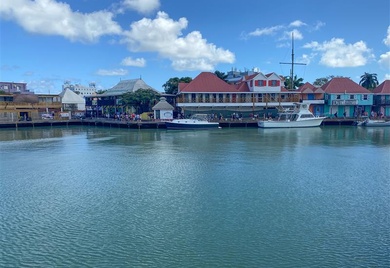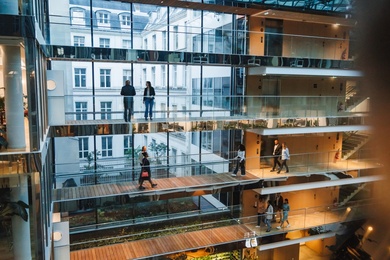Three lessons from the German "Mittelstand"
 Much of Germany’s economic and trade success is attributed to its highly productive and innovative SME market. Mittelstand contributes to 52 percent of GDP, employs over 70 percent of its workforce and is composed of principally export firms, securing the country’s position as second largest exporter worldwide.
Much of Germany’s economic and trade success is attributed to its highly productive and innovative SME market. Mittelstand contributes to 52 percent of GDP, employs over 70 percent of its workforce and is composed of principally export firms, securing the country’s position as second largest exporter worldwide.
So what is the connection between the Mittelstand and LAC?
- Innovation: German SMEs are some of the most innovative in Europe: 54 percent launched an innovative product or process between 2008 and 2010. Harvard Business Review reveals the Mittelsand excel given a culture of “razor-thin focus” generating unparalleled efficiency. A focused business model with high levels of investment in R&D and managerial expertise allows the firm to hone in on developing one unique product or service. Doing the sole, targeted activity so well tends to translate into uncomplicated processes and fully utilized inputs.
According to the World Bank, transformational, high-growth SMEs in LAC are not a principal source of innovation. Regional innovation stems from larger firms and multilatinas (as you may remember from my previous blog), whereas SMEs, especially those utilizing energy efficiency or cleaner production, could benefit from increased investment in patent activity, R&D, managerial practices and the introduction of new products to the market – all key contributors to an innovative private sector.
- Financing: German SMEs rely on sound financing models – chiefly equity and bank loans. The often family-owned “Mittelstand” finances more than half of its investment from its own capital and almost a third with debt. Venture capitalists are showing increasing interest in the space with longer-term investments of 5 years or more. A Rӧdl & Partner study about the Mittelstand states the most attractive industry for equity investors is the clean tech space occupied by SMEs launching environmental technologies that seek to adapt to climate change.
Thanks in part to financial markets work completed by the IDB Group’s private sector, banks in LAC are increasingly open to financing SMEs and environmentally-friendly firms and assessing their unique risk profile. In the green space, there is still unmet demand for funders to package financing in a way that is cognizant of the green industry’s higher initial capital costs (although lower long-term operating costs), need for longer-term tenors and the reality of technological risks. A financial sector that is more aware of SME and green growth risks is often more likely to keep equity and collateral requirements and debt risk premiums reasonable and accessible.
- Training: German SMEs employ 83 percent of trainees, demonstrating a strong investment in both value-added job creation and the human capital development of future generations. Germany’s education system and labor force tend toward science, technology, engineering and mathematics with almost double the engineering graduates compared to Chile, Mexico and Argentina, according to the World Bank. Increased investments in scientific and engineering training may strengthen productivity and the high tech nature of SMEs in LAC and encourage the development of more green growth firms.
Although there are some lessons for LAC, the work of BDI and Mittelstand panel namely reminded me how fundamentally well-positioned the region and its SMEs already are. Through initiatives like connectAmericas, Infrascope, FINPYME and our Trade Finance Facilitation Program, the IDB Group is supporting the continued development of SME innovation, financing, training and much more.
¿TE GUSTA LO QUE ACABAS DE LEER?
Suscríbase a nuestra newsletter para mantenerse informado sobre las últimas noticias de BID Invest, publicaciones de blog, próximos eventos y para obtener más información sobre áreas específicas de interés.
Suscribirse



